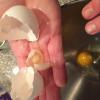Serendip is an independent site partnering with faculty at multiple colleges and universities around the world. Happy exploring!
You are here
Home » Web Paper or Special Event
By AntoniaAC
September 23, 2016 - 20:28
A push away from societal norms, familial influences, and conformity rebellion is a mandatory quality that children develop. Through alternative forms of play children challenge comfort zones and the common mentality of the good, the bad, and the ugly. In “Interrogating teleological understandings of play in spaces of material alterity and low surveillance” by Tim Edensor, Bethan Evans, Julian Hotloway, Steve Millington and Jon Binnie, the five authors grapple with the conception of conventional childhood play through modern urbanization. Mirrored with childhood deviance, the article tackles the need for unsupervised creativity in unorthodox ways.
September 23, 2016 - 19:50
Kid Stuff written by Molly Knefel introduced some interesting debates about whether should childhood be carefree or not—and whether play is carefree for children. While in the short post named “play time” written by Dorothy Kim, the author delightfully described how was her childhood play looks like and how does the school work affects her forms of play.The two writing pieces echoes and contradicts to each other in several ways.
September 23, 2016 - 18:07
“Play gives you hope for a better tomorrow…” (Henig, 20) After analysing the text, Taking Play Seriously, the author writes about the importance of play. Cathyyy also writes that, “Playing with people on the trip and having all those kinds of different travelling experiences are one of my most favorite memories in my life. I believe that play fostered me, in the way of making me an out-going and optimistic person.” Well, I agree with the author’s and Cathyyy’s view about play but on the other hand, does play have grave detrimental effects in the growth process of children?
September 23, 2016 - 17:41
Destructiveness vs. Innocence
September 23, 2016 - 17:09
Many children have once played in some sort of ruin. This does not always mean they have played in a dump or construction ground or old building, this means they have played and laughed in an environment that was harsh, an environment we typically try to hide them from and leave them naïve too. When children are given the opportunity to play, they are able to do it in so many different conditions if it is relatively safe or allowed by a guardian. Kids explore and find use of any kind of ruin with smiles and laughter. It is interesting to look at how children are able to find joy in the darkest situations.
September 23, 2016 - 16:57
Playing for the Identity
Play is a concept that is deeply influenced by the individual and is vital to the development of not only the individual, but to society as well. Currently, there seems to be a large misconception that play applies only to children and is unnecessary. However, there is a deeper importance to play; an importance that cannot acknowledged without looking deeper into the interworking of play itself.
September 23, 2016 - 16:56
In the post “Play”, written by the user Porkchop, the author describes her early experiences of play with her three younger siblings. Their activities seem to fit perfectly within the mainstream conception of childhood play. Her and her siblings built forts, played with army toys in a sandbox, and made up their own games, into which they incorporated everything around them. The author’s description of play feels timeless, it could have easily taken place several decades ago, and free of any serious concerns. In some ways, it seems that the author has been influenced by the myth of childhood, as described by Molly Knefel in her article “Kid Stuff”. While this misconception may not seem harmful on the surface, the danger of romanticizing childhood is two-fold.
September 23, 2016 - 16:53
Vivian O'Bannon
Professor Jody Cohen
Emily Balch Seminar – Changing Our Story
September 23, 2016
Play: A Method of Learning in School and Learning Life Skills
September 23, 2016 - 16:46
Survival of the fittest, is a topic not only learned in the classroom but also during recess. We are our childhood in almost every aspect. Times are constantly changing but the people we were during play remains constant. “Play” by Porkchop, reminisces on her own experience as the eldest child in a family four children. The scene they present us with is highly romanticized with children playing in the white fence and garden, but they also mention remembering being outside as one of the key aspects to their experience. The author is saddened that her youngest sibling will now face a different childhood of which Porkchop seemed to have enjoyed so much. She understands that play is not only different throughout time but also throughout human development.
September 23, 2016 - 16:27
Playtime is a vital aspect of childhood. By fostering learning and fun, play creates fond memories that last throughout people’s lifetimes. While the nostalgia of play seems to be a positive experience, there are aspects of play that are reflections of the realities of the world imprinted on children’s minds. Play is a key component of a child’s development through the various creative and emotional changes that occur. In such an environment, children are allowed to explore various aspects of life as well as develop their own opinions on how they view the world. Play is an important part of shaping children’s worldviews, yet there are potential dangers when play becomes limited by outside factors including representation and authority figures.










